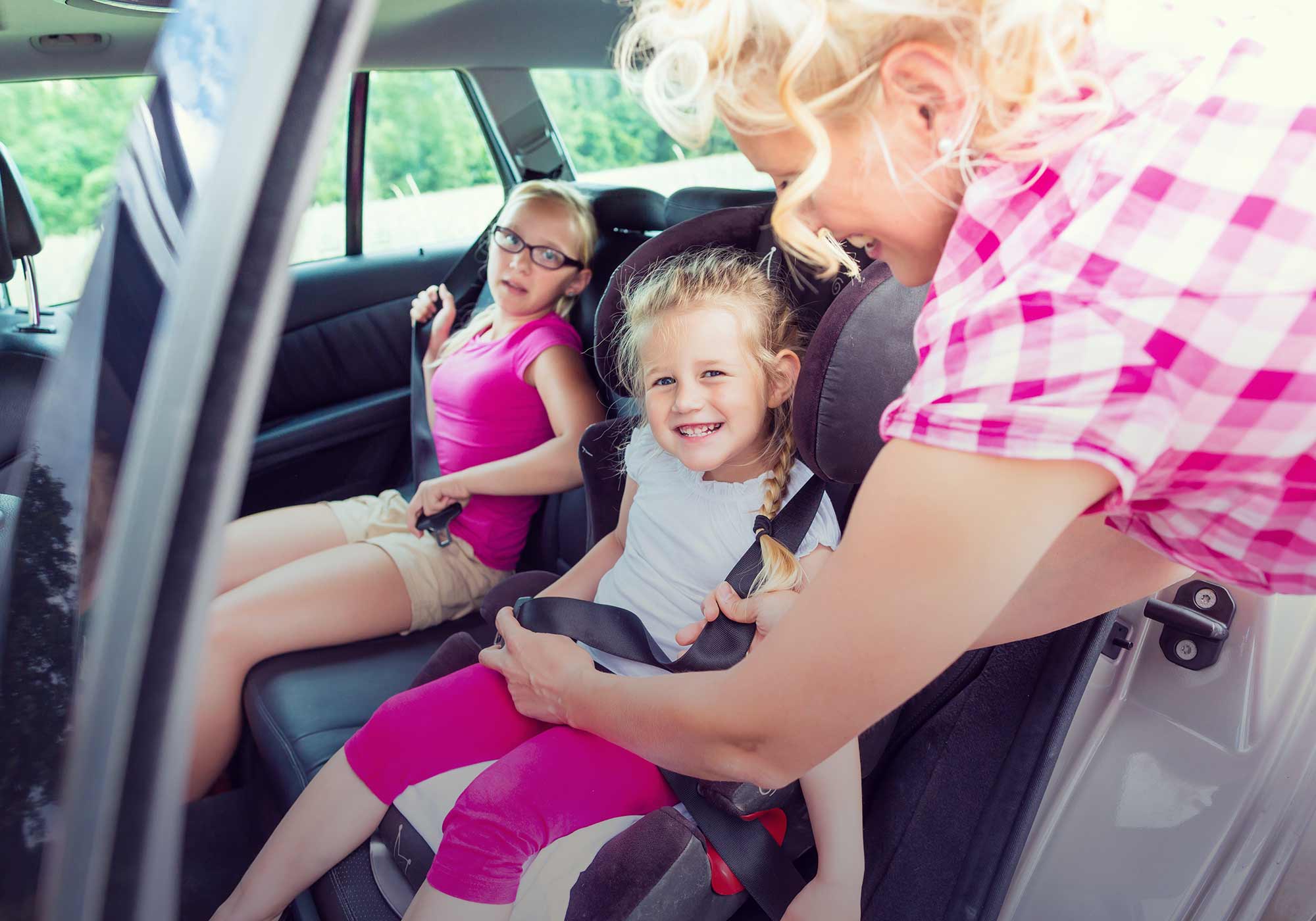Did you know? As the driver of a car, you are legally responsible for making sure that any passenger under 14 years old is using the appropriate child restraint or an adult seatbelt. The police can impose a £30 fixed penalty to drivers spotted breaking the law and the maximum fine is £500 if it goes to court.¹
So how do you keep children safe in the car?
In the UK, all drivers – and passengers – must wear a seatbelt in the front and back of a car.
You’re only allowed 1 person in each seat fitted with a seat belt. And children must use the correct car seat for their weight until they reach 135 centimetres tall or their 12th birthday, whichever is first.
Using a child car seat or booster seat²
According to UK law, you can choose a child car seat based on the child’s height or weight.
Height-based car seats
Height-based car seats are known as ‘i-Size’ seats. They must be rear-facing until your child is over 15 months old. Your child can use a forward-facing car seat when they’re over 15 months old.
You must check the seat to make sure it’s suitable for the height of your child.
Weight-based car seats
Weight-based car seats must be rear-facing until your child weighs more than 9kg.
Which seat they use after then will depend on their weight.
| Child’s weight | Car seat |
|---|---|
| 9kg to 18kg | Rear or forward-facing baby seat |
| 15kg to 25kg | Rear or forward-facing child seat (booster seat) |
| Over 22kg | Booster cushion |
Make sure you fit a child car seat correctly³
By law, you must:
- only use a child car seat with a seat belt that has a diagonal strap – unless it’s specifically designed for use with a lap seat belt
- deactivate any front airbags before fitting a rear-facing baby seat in a front seat
- not fit a child car seat in side-facing seats.
Children with disabilities
The same rules apply for children with disabilities unless a doctor says they’re exempt on medical grounds. They can also use a disabled person’s seat belt or a child restraint designed for their needs.
Are there any exceptions?⁴
The law allows children over three years to travel without a car seat only if:
- they are in a taxi or a minicab and they wear an adult seat belt
- on an occasional journey (e.g. an unforeseen emergency) over a short distance; the child must use an adult belt and sit in the back
- there’s no room for a third child seat in the back of the vehicle; a child can sit in the back using an adult belt
- the vehicle doesn’t have a seat belt and they sit in the back.
The only exception allowed for children under three is in a taxi or minicab when they can travel without a child’s car seat or seat belt, but only on the back seat.
For more information on keeping children safe in the car see: and https://www.gov.uk/child-car-seats-the-rules
Keeping unborn children safe
By law, all pregnant women must wear a seat belt when travelling in the front or back seat of a car.⁵
Royal Society for the Prevention of Accidents (ROSPA) suggest the safest way for a pregnant woman to wear a seat belt is to place the diagonal strap over the shoulder, not the neck, and between the breasts.⁶ The lap belt needs to be flat on the thighs, fitting comfortably beneath the belly, and over the pelvis not the bump. The belt should be worn as tight as possible.
Pregnant women should not wear ‘Lap-only-Belts’ as they have been shown to cause serious injuries to unborn children in the event of sudden deceleration. Mother and baby are both safer in a collision if a lap and diagonal seat belt is being worn correctly.
Sources:
[1] http://news.bbc.co.uk/1/hi/uk/4781511.stm
[2] www.gov.uk/child-car-seats-the-rules
[3] https://www.gov.uk/child-car-seats-the-rules
[4] www.gov.uk/child-car-seats-the-rules/when-a-child-can-travel-without-a-car-seat
[5] [6] www.rospa.com/roadsafety/adviceandinformation/vehiclesafety/in-carsafetycrash-worthiness/seat-belt-advice.aspx
